Airtable x Venly
This step-by-step guide explains how you can mint and distribute NFTs, using Airtable.
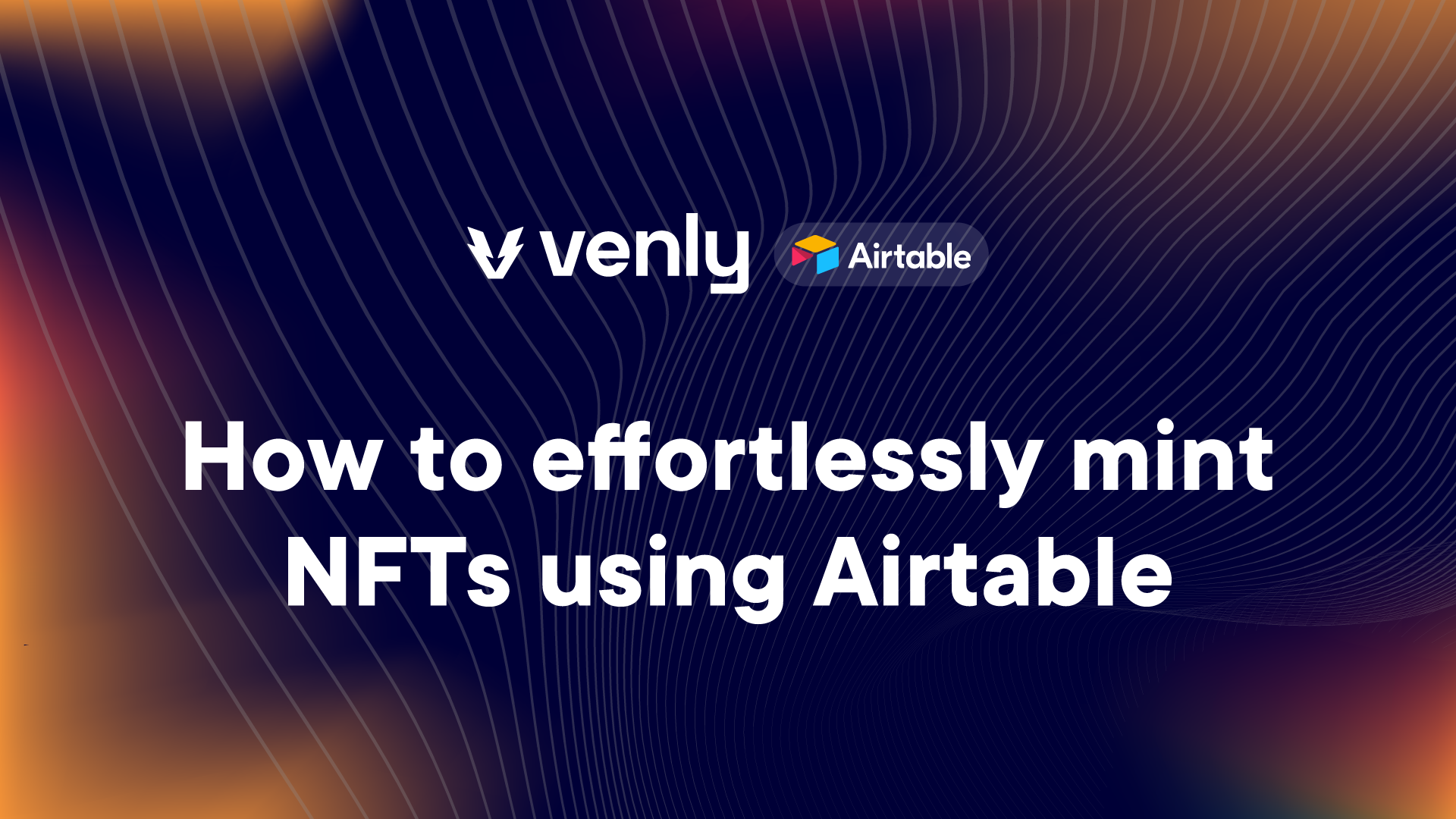
Scenario Explained
In this guide, we will be working with the Venly and Airtable integration on Zapier
We will create an automated workflow such that whenever a record is updated in a table, an NFT will be sent to the email or wallet address. The automated workflow will take care of minting and sending the NFT to an email or wallet.

End Result
You enter the NFT mint details in a table:

Adding relevant records in Airtable
As a result, the NFT will be minted and sent to the wallet address or email:

Minted NFT
Prerequisites
- You should have completed the onboarding with Zapier.
- You should have an NFT contract/collection already created.
- You should have an account on Airtable. If not, click here to sign up.
Configuring Zapier with Venly & Airtable
1. Configure Airtable
1.1 Create a table
- You will arrive on the dashboard after you log into your Airtable account.
- Get started by clicking on Start from scratch.

Create a table
Now we need to add the relevant columns in the table. All of the following columns will be of the type: Single line text. The very first column is a primary column and you can rename this to anything. In this example, we renamed it to NFTs.
It's important to add values in the first row, after you have created all the columns.
- First, change the name of your Base. In this example, it is Mint NFTs. (Rename to anything)
- Next, add a column named Fungible?. (This will indicate to mint fungible or non-fungible token)
- Next, add a column named Name. (The name of the NFT)
- Next, add a column named Description. (The description of the NFT)
- Next, add a column named Image URL. (The URL of the image of the NFT)
- Next, add a column named External URL. (Any external link to your website, landing page, etc.)
- Next, add a column named Mint Address/Email. (This is the destination wallet address or email for the NFT)

Configuring Airtable records
- Next, add a column named Mint Amount? (This represents the number of NFTs to mint)
- Next, add a column named time (This column will be of the type:Last modified time)
The time column has to be of the type: Last modified time.

Adding Airtable columns
You have successfully created a table with the required parameters. Next step is to configure Airtable with Zapier.
1.2 Configure Airtable trigger on Zapier
- Head over to your Zapier dashboard and click on + Create and then Zaps.
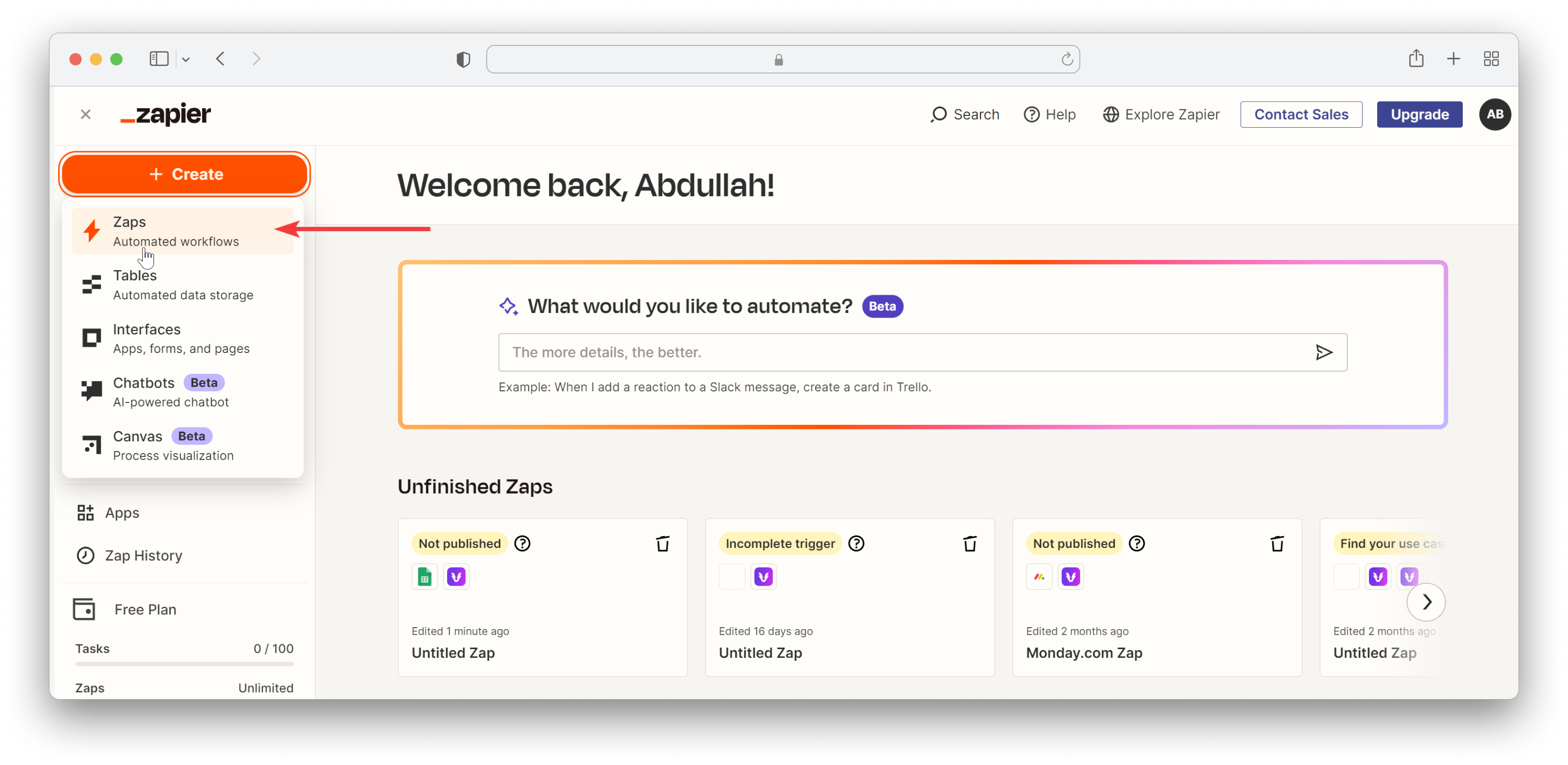
Zapier Dashboard
- Click on the Trigger , search and click on Airtable
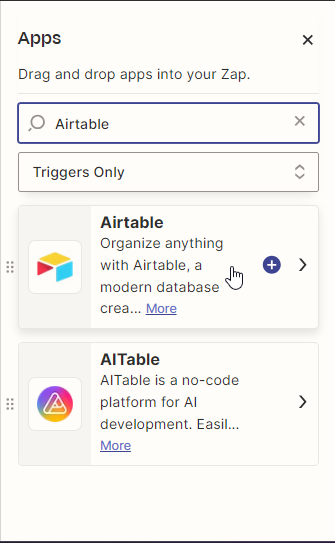
Airtable Trigger
- Select the event as New or Updated Record and continue
- Connect your Airtable account with Zapier (A pop-up window will appear where you need to enter your Airtable login credentials and approve theBase which will have your table)
- Next, in the Trigger section, select your:
- Base as Mint NFTs
- Table as Table 1
- Timestamp Field as time
- Click Continue.
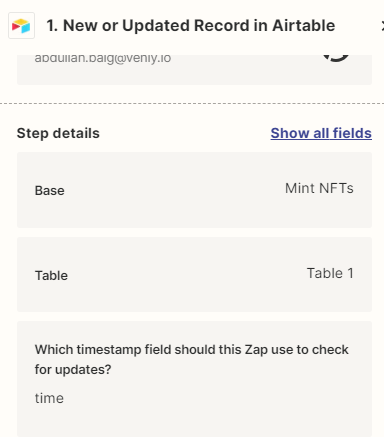
Trigger fields for Airtable
- Finally, click on Continue with selected record
This is the last step for configuring Airtable. The next step will be configuring Venly action.
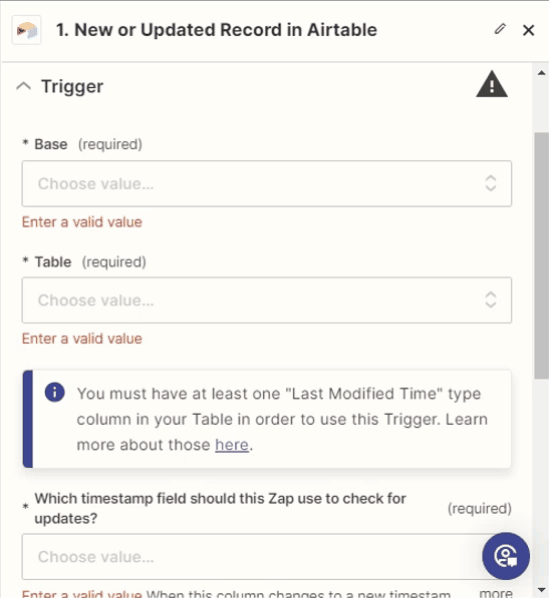
Configure Airtable Trigger
2. Configure Venly Action on Zapier
- Next, we need to add the Venly action
- Search and click on Venly
- Choose the event as Create and Mint NFT and continue

Venly Action
- Next, add your Venly account to Zapier. Your account should already be visible if you previously created your contract. Read how to add Venly account on Zapier.

Add Venly account to Zapier
3. Configure the action fields
Basic fields (need to be set up manually)
- Blockchain: First, select the blockchain of your NFT contract from the drop-down list.
- Contract: The NFT contracts will be displayed here based on the blockchain selected. Choose the NFT contract from the drop-down list.
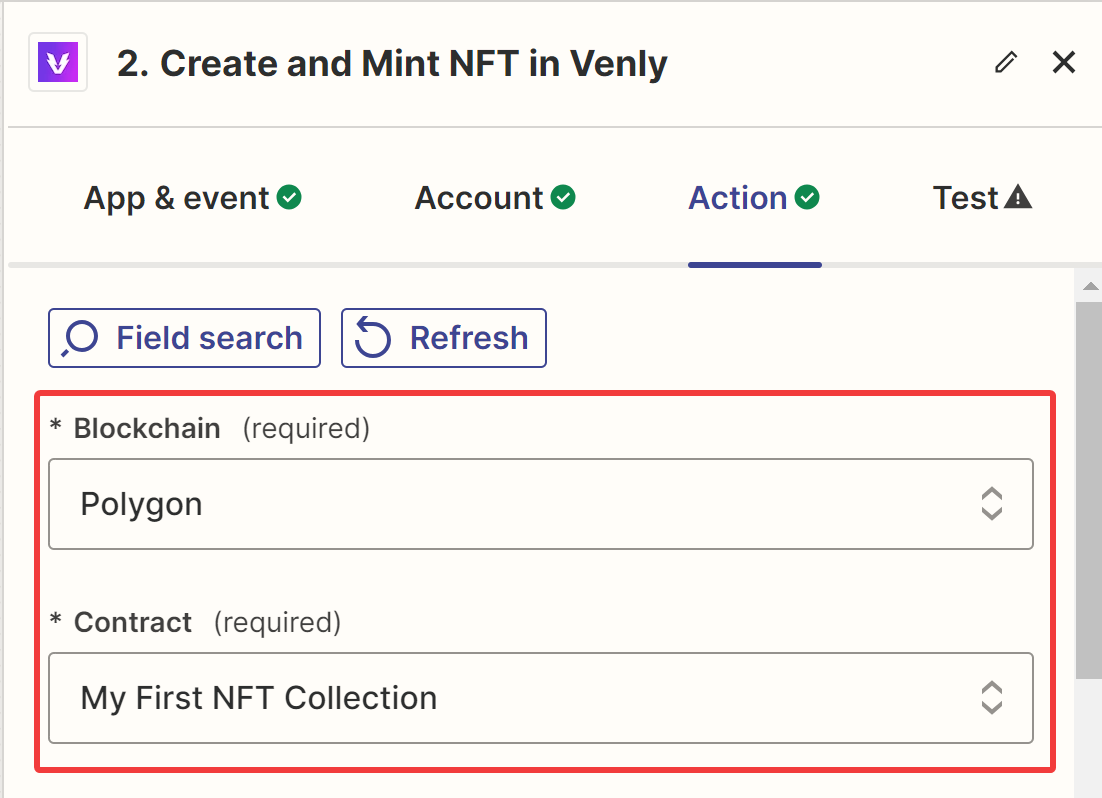
Select blockchain and NFT contract address
Configure required fields
For every action field, when you click on it a drop-down appears. Click on Custom and then proceed to select the relevant value. All values will be fetched from Airtable.
- Fungible: Next, from the drop-down menu select the relevant field (Fungible?). (_A false value means you will be minting NFTs)
- Name: This is the name of the NFT. From the drop-down menu select the relevant field (Name) . You can mint customized NFTs by adding a message and then merging it with the subscriber's name. In this example, we have manually added the message: "Welcome to Venly" and then added the "1. Name:". This will combine your message and the name of your subscriber that it fetches from Airtable.
Suppose your subscriber enters their name: "John". The name of the minted NFT will be: "Welcome to Venly John"
- Description: From the drop-down menu select the relevant field (Description).
- Image URL: From the drop-down menu select the relevant field (Image URL).
In this example, we have created a customized image for the NFT. Our image looks like this:
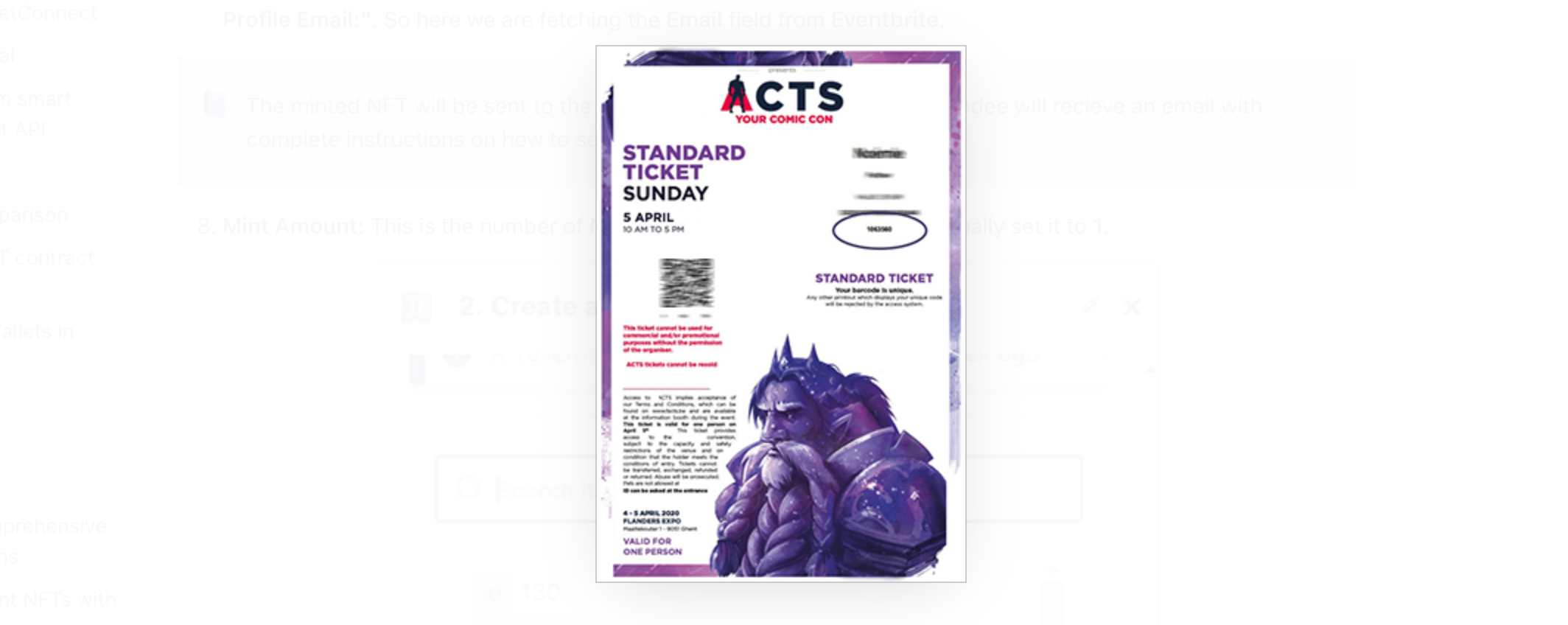
Our Custom NFT image
- External URL: This can be a link to your website or anything. From the drop-down menu select the relevant field (External URL).
- Mint Address: This is the wallet address or email where the NFT will be sent. From the drop-down menu select the relevant field (Mint Address/Email). So here we are fetching the address field from Airtable.
The minted NFT will be sent to the wallet address provided or email. In case of email, the end-user will receive an email with complete instructions on how to create their wallet and view the NFT.
- Mint Amount: This is the number of NFTs you want to mint. From the drop-down menu select the relevant field (Mint Amount).
Optional fields
- Max Supply: This is the maximum number of NFTs that can be minted. You can configure the NFT supply to 1,2 10, 100, etc.
- Attributes: Pass an array of JSON objects to add attributes. Learn about attributes.
Finally click on Publish, and your Zap will be live.

Schedule a demo with our team to explore tailored solutions or dive in and start building right away on our portal.
Updated 2 months ago